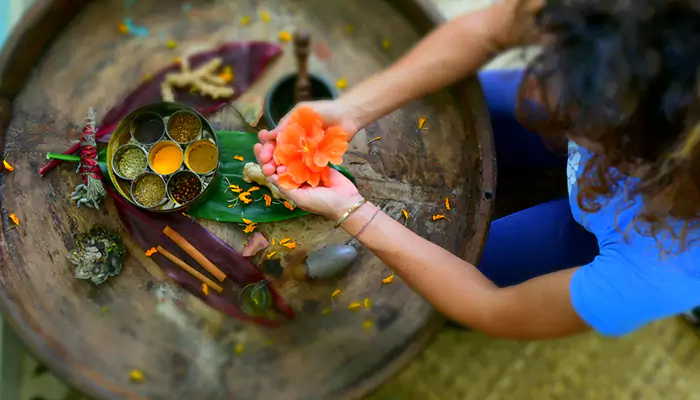Exploring Traditional Skincare Practices Across Cultures And Their Modern Adaptations
Skincare is a universal concern, transcending time and geography.
- Ishani Karmakar
- 03 April, 2024
- 2 mins ago

Exploring Traditional Skincare Practices Across Cultures And Their Modern Adaptations
Skincare is a universal concern, transcending time and geography.
Across the globe, diverse cultures have developed unique skincare practices rooted in their environment, beliefs, and available resources. These traditional methods, honed over centuries, offer fascinating insights into the ways different societies approach beauty and wellness. In recent years, there's been a resurgence of interest in these practices, leading to their adaptation and integration into modern skincare routines. Let's delve into some of these traditional skincare practices from around the world and explore their contemporary incarnations.
The Japanese Art of Layering
In Japan, skincare is considered an art form, emphasizing gentle care and meticulous layering. The traditional Japanese skincare routine involves multiple steps, starting with cleansing (double-cleansing is a norm), followed by the application of various layers of moisturizers and serums to lock in hydration. This method ensures that each layer is absorbed, maximizing the benefits of each product.
Modern Adaptation: The concept of layering has become a global phenomenon, inspiring the Korean 10-step routine and influencing Western skincare approaches. Today, many adopt a tailored version of this practice, focusing on layering products according to their skin's specific needs.
The Ayurvedic Balance of India

Ayurveda, an ancient Indian system of medicine, offers a holistic approach to skincare, emphasizing the balance of body, mind, and spirit. It categorizes skin types into three primary doshas: Vata (dry skin), Pitta (sensitive skin), and Kapha (oily skin). Skincare practices and products are then tailored to balance these doshas, using natural ingredients like turmeric, neem, and sandalwood.
Modern Adaptation: Ayurvedic principles have been embraced by many modern skincare brands, offering products designed to balance specific doshas. Furthermore, the holistic approach of treating the skin by considering overall wellness has inspired integrated beauty regimens that include diet, exercise, and mindfulness.
The Middle Eastern Ritual of Hammam
The hammam, or Turkish bath, is a traditional Middle Eastern practice that combines steam bathing, massage, and exfoliation to cleanse the skin deeply and improve circulation. The ritual involves a sequence of rooms with increasing temperatures, culminating in a vigorous scrub with a kese (a rough mitt), which exfoliates dead skin cells, leaving the skin soft and rejuvenated.
Modern Adaptation: The hammam experience has been adopted by spas worldwide, offering variations of the traditional ritual. At-home exfoliating products inspired by the kese and Moroccan black soap are now available, bringing a piece of this ancient practice into modern skincare routines.
African Shea Butter Nourishment
In many African cultures, shea butter has been a staple skincare ingredient for centuries. Extracted from the nuts of the shea tree, it is rich in fatty acids and vitamins, making it an excellent moisturizer and healer for the skin. Traditionally, it has been used to protect the skin from the harsh sun and dry winds, as well as to soothe and heal minor skin conditions.
Modern Adaptation: Shea butter is now a common ingredient in a wide range of skincare and beauty products worldwide. Its moisturizing and healing properties are prized in formulations for creams, lotions, and balms, catering to various skin types and conditions.
The Chinese Tea Antioxidant Boost
In China, tea has long been consumed for its health benefits, including its positive effects on the skin. Green tea, in particular, is rich in antioxidants that protect the skin from free radical damage, reduce inflammation, and slow the aging process. Traditional practices include applying brewed tea to the skin or incorporating tea leaves into topical treatments.
Modern Adaptation: The antioxidant properties of tea are harnessed in many modern skincare products. Green tea extracts are found in serums, creams, and masks, offering protection against environmental damage and aging, and maintaining the skin's health and vitality.
The beauty of traditional skincare practices lies in their time-tested wisdom and natural approach to beauty and wellness. As these ancient practices are adapted and integrated into modern skincare routines, they remind us of the global heritage of skincare and the importance of nurturing our skin with care, respect, and nature's bounty.






